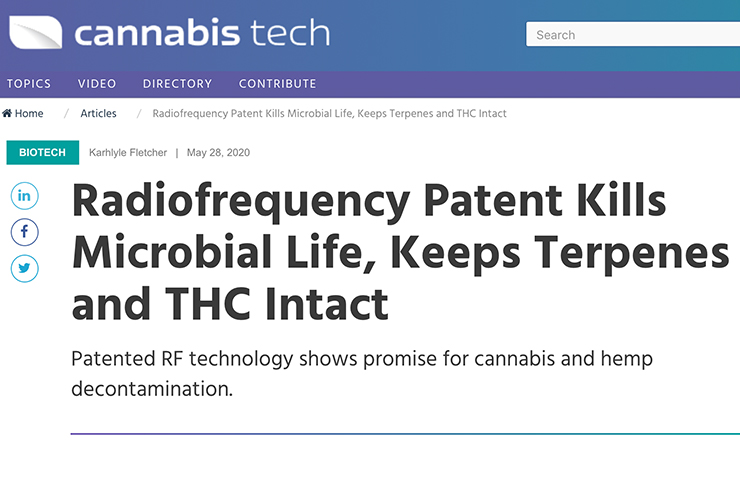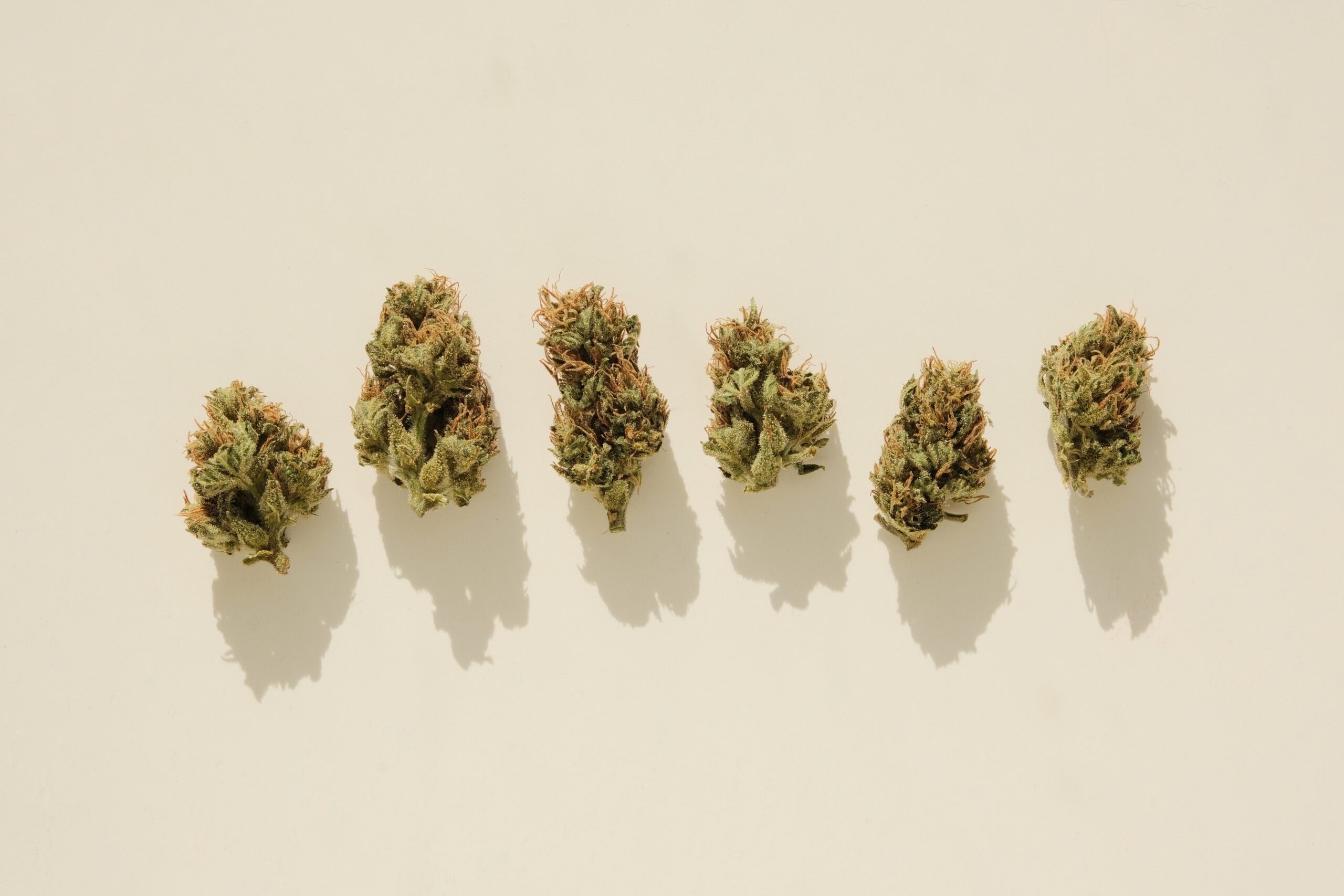MICROBIOLOGY TEST - FAQ
What is a microbiology test?
A microbiology test is a laboratory procedure to examine and characterize microorganisms such as bacteria, yeast, mold and other pathogens. In cannabis the term “microbiology testing” refers to counting the number of bacteria, yeast, mold, etc., or testing whether a specific pathogen is present in the product or not.
What is log reduction in microbiology?
In microbiology “log reduction” is a measure of how effective a process is at reducing pathogens. The greater the log reduction the more effective the process is at killing pathogens. ‘Log’ is short for logarithm, a mathematical term. Every ‘log’ increase is a 10-fold increase. For example, 3-log is 103 o 10x10x10 = 1000.
Una reducción logarítmica lleva la potencia en la dirección opuesta. Por ejemplo, una reducción logarítmica de 1 es equivalente a una reducción de 10 veces o el recuento final es 1/10 del recuento original. Entonces, el porcentaje de reducción es (1 - 1/10) x 100 = 90%.
To determine the log reduction, microbiology labs count the number of colony-forming units (CFU/g) of a given microorganism, e.g., TYMC, in a product before treatment. Then another sample is sent after Radio Frequency treatment to measure CFU/g of the same pathogen. The result of the difference between the ‘before’ and the ‘after’ is expressed as a Log Reduction.
Como regla general básica, por cada número de reducción logarítmica adicional, se suma un 9 al porcentaje de reducción, por lo que una reducción logarítmica de 3, como se ilustra arriba, es (1 - 1/1000) x 100 = 99,91 TP2T de reducción en comparación con una reducción logarítmica reducción de 6 que equivale a una reducción de 99.9999%.
What is a gram stain test used for in microbiology?
In microbiology, a gram stain is a test used to identify bacteria. A sample is stained and examined under a microscope to see how the bacteria react to the stain. The bacteria are classified as either Gram-positive or Gram-negative based on the color they turn. Gram-positive bacteria appear purple, while Gram-negative bacteria appear pink.
What are CFUs in cannabis?
CFU stands for Colony Forming Units. It indicates the number of living microorganisms in cannabis. CFU is determined by counting the number of colonies that grow on a Petri dish.
What microbes and pathogens are screened in cannabis testing?
The microbes and pathogens screened in cannabis products vary and depend on state regulations. Some of the common ones include Total Yeast and Mold (TYMC), Total Aerobic Count (TAMC), Aspergilo, Coliforms, E. coli, and Bile-Tolerant Gram-negative Bacteria (BTGN).
What are the types of tests for microbial contamination in cannabis?
Two types of microbial testing are used for cannabis plant material. The first is a culture-based method involving plating a sample on selective media and incubating it under specific conditions to allow the growth of targeted microbes. The colonies formed are then counted to determine the microbial load, expressed as CFU/g. The second is the PCR method, which detects and quantifies specific microbial DNA of pathogens in the sample.
Will Radio Frequency treatment help pass microbial testing?
Treatment with Radio Frequency is proven to reduce Total Yeast and Mold Count (TYMC) by more than 99.9% and comply with regulatory requirements. Radio Frequency is also effective in addressing other testing criteria such as Total Aerobic Microbial Count (TAMC), Bile-Tolerant Gram-Negative (BTGN), Coliforms, and Aspergilo.
Does Radio Frequency eliminate pesticides or heavy metals?
Radio Frequency treatment focuses on reducing microbial contamination, such as yeast, mold, and bacteria, but it does not address or eliminate pesticides or heavy metals.
Can Radio Frequency Treat Penicillium?
Penicillium es un tipo de moho. Se puede encontrar de forma natural en el medio ambiente (suelo, vegetación en descomposición y aire).
Like any other microorganism, Penicillium family includes a wide range of species from which a few have been proven to be very beneficial to humans; for example, antibiotic penicillin is produced by Penicillium, and the mold used in making Camembert cheese is from the Penicillium family
Por otro lado, muchas especies de Penicillium se consideran contaminantes, y algunas incluso pueden causar infecciones en humanos o producir micotoxinas.
Knowing that Radio Frequency (RF) is effective in total yeast and mold reduction, it is expected that RF can reduce Penicillium population. However, we do not have data specifically related to Penicillium species on cannabis and cannot predict specific log reduction.
Does Radio Frequency kill mycotoxins?
Las micotoxinas como las aflatoxinas son toxinas naturales producidas por mohos como el Aspergillus. Estas toxinas pueden ser la raíz de una variedad de efectos adversos para la salud tanto en humanos como en animales. La supresión inmunológica (que debilita el sistema inmunológico) y el cáncer se encuentran entre los efectos en la salud asociados con las aflatoxinas. La mayoría de las micotoxinas son químicamente estables y no se destruyen por completo durante el procesamiento de los alimentos. Para eliminar estos compuestos, se requieren condiciones de procesamiento más complejas y severas.
En el pasado, probamos el efecto de la radiofrecuencia en la reducción de aflatoxinas en el maíz y observamos cierta reducción en las concentraciones de aflatoxinas a altas temperaturas (110-120°C). No tenemos datos sobre el efecto de RF en las micotoxinas en Cannabis. Sin embargo, según la experiencia previa, se puede decir que el tiempo y la temperatura del proceso de RF para la reducción de la población microbiana en el Cannabis no es suficiente para destruir las micotoxinas.
Can Radio Frequency treat bile-tolerant gram-negative bacteria?
Bile-tolerant gram-negative (BTGN) bacteria are a group of bacteria that could survive the harsh condition of the human stomach. They are equipped with a membrane that protects them against a wide range of chemicals such as detergents and antimicrobial enzymes or even many antibiotics. Some bacteria from Enterobacteriaceae, Pseudomona and Aeromonas families are members of the bile-tolerant gram-negative bacteria. They are widely spread in the environment.
En los EE. UU., las agencias reguladoras que utilizan la Monografía de Cannabis de la American Herbal Pharmacopoeia como referencia para definir el límite microbiano aceptable en Cannabis requieren pruebas para bacterias gramnegativas tolerantes a la bilis con un límite aceptable de < 1000 CFU/g. Washington, Massachusetts, Nuevo México, Nueva York, Illinois y Ohio se encuentran entre los estados que requieren pruebas para bacterias gramnegativas tolerantes a la bilis.
Las regulaciones canadienses exigen pruebas de bacterias gramnegativas tolerantes a la bilis en el cannabis. Ziel tiene una experiencia limitada con la remediación de BTGN; sin embargo, en este momento, Ziel no tiene datos adecuados para predecir la reducción logarítmica esperada de BTGN con la receta Baseline.
Can Radio Frequency kill Aspergilo?
In limited production runs on cannabis flower that tested positive for Aspergillus, Radio Frequency was able to successfully bring that product to compliance.
Does mold or yeast regrow after Radio Frequency treatment?
No. As long as the water activity level is below 0.65, molds, yeasts, and bacteria will not grow back. Certificates of Analysis usually measure water activity levels. In addition, some states require water activity levels < 0.65 or 0.60 to ensure product stability after it is placed in retail dispensaries.
Should cultivators identify common molds before Radio Frequency treatment?
Cultivators don't need to identify the type of mold before treatment.
Can Radio Frequency fix powdery mildew?
Unfortunately, no. As the mold advances, visual impairment occurs. There is no remediation process that can remove the powdery mildew. The recommendations are to improve your upstream processes prior to harvest, manage the post-harvesting process effectively, and remediate with Radio Frequency.

¿Se produce la regeneración después de tratar el producto con radiofrecuencia?
No. Como se detalla en el cuadro, mientras el nivel de actividad del agua esté por debajo de 0,65, el moho, las levaduras y las bacterias no volverán a crecer. Los certificados de análisis suelen medir los niveles de actividad del agua. Además, algunos estados exigen niveles de actividad del agua < 0,65 o 0,60 para garantizar la estabilidad del producto después de colocarlo en los dispensarios minoristas.
Más recursos sobre radiación ionizante y no ionizante




